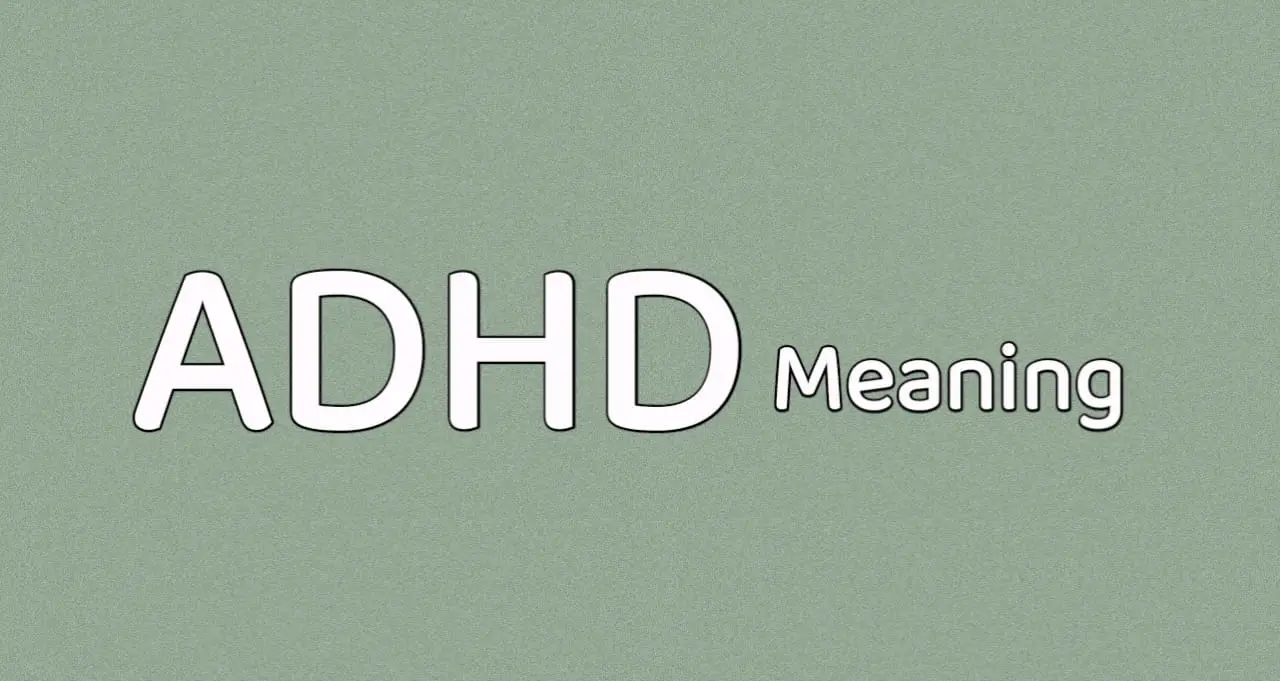ADHD, or Attention Deficit Hyperactivity Disorder, is a neurodevelopmental condition that affects people of all ages. In this blog post, we’ll delve into the meaning of ADHD, explore its symptoms, and discuss effective coping strategies. Let’s navigate the complex world of ADHD in a human-friendly tone, aiming to provide valuable insights and support.

Demystifying ADHD
ADHD is often misunderstood, so let’s begin by demystifying its meaning. ADHD is a brain-based disorder that impacts a person’s ability to focus, control impulses, and regulate energy levels. It’s essential to recognize that ADHD is not simply a lack of attention or a result of laziness; rather, it’s a genuine medical condition with a neurological basis.
Types of ADHD
ADHD manifests in different ways, leading to three primary subtypes: Predominantly Inattentive Presentation, Predominantly Hyperactive-Impulsive Presentation, and Combined Presentation. Understanding these subtypes is crucial for tailoring support and interventions to an individual’s specific needs.
Common Symptoms
To comprehend ADHD fully, let’s explore the common symptoms associated with each subtype. Individuals with the Inattentive Presentation may struggle with focus, organization, and forgetfulness. On the other hand, those with the Hyperactive-Impulsive Presentation may exhibit restlessness, impulsive behavior, and difficulty waiting their turn. The Combined Presentation involves a combination of both sets of symptoms.
Diagnosing ADHD
Diagnosing ADHD involves a comprehensive assessment by healthcare professionals, considering medical history, behavioral observations, and standardized ADHD rating scales. A thorough evaluation is crucial to ensure an accurate diagnosis and to rule out other possible factors contributing to the symptoms.
ADHD Across the Lifespan
Contrary to popular belief, ADHD isn’t limited to childhood. Many individuals continue to experience symptoms into adolescence and adulthood. Recognizing and addressing ADHD throughout the lifespan is vital for fostering a supportive environment and enhancing overall well-being.
Also Read : Indemnity Meaning
Navigating Challenges
Living with ADHD presents unique challenges, but it’s essential to highlight that individuals with ADHD also possess strengths. Effective coping strategies involve a combination of behavioral interventions, psychoeducation, and, in some cases, medication. Embracing a holistic approach empowers individuals to navigate challenges successfully.
Supportive Environments
Creating a supportive environment is key to helping individuals with ADHD thrive. This includes implementing strategies at home, in educational settings, and in the workplace. Simple adjustments, such as clear communication and structured routines, can significantly impact an individual’s ability to manage their ADHD symptoms.
Breaking Stigmas
Unfortunately, stigmas surrounding ADHD persist, contributing to misconceptions and hindering support. Breaking down these stigmas involves raising awareness, promoting understanding, and fostering empathy. ADHD is not a choice but a unique aspect of an individual’s neurodiversity.
Conclusion
Understanding ADHD goes beyond acknowledging its meaning. It involves recognizing the diverse ways it manifests, empathizing with the challenges individuals face, and implementing supportive strategies. By fostering awareness, embracing differences, and breaking down stigmas, we can create a more inclusive world for those living with ADHD.






